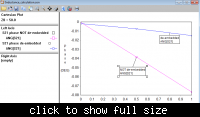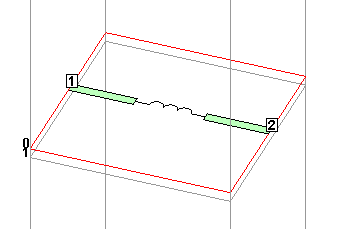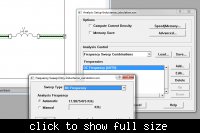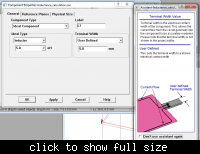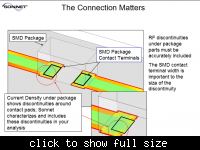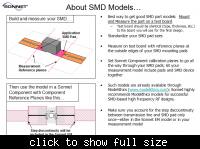stefanpo
Newbie level 4
Hello all, I am confused with the concept of de-embedding in EM simulation and would be very happy if someone can help me out.
As a beginner in EM simulation, I understood that de-embedding helps to eliminate the influence of surrounding components (e.g. feed lines) when modelling the true frequency response of the device under test. For example, if I have an ideal inductor connected with transmission lines in two ends, the effect from the transmission lines on the inductance of the inductor will be cancelled out if I set the reference planes at the ports of the ideal inductor. Therefore if the inductor has inductance 5 nH, then one would expect the simulated results would be 5 nH, at least in low frequency.
When I tried to realized the above concept in Sonnet, I found a different story. The simulated inductance deviates from the ideal values. Moreover, when I change the width of the transmission line, the inductance also changes. This means the transmission lines still have influence on the simulation even I set the reference plane of de-embedding at the two ports of the ideal inductor.
Any help in Sonnet or pointing out my misunderstanding would be much much appreciated
See attachment for the results in Sonnet.
Stefan
 View attachment Inductance_calculation.rar
View attachment Inductance_calculation.rar
As a beginner in EM simulation, I understood that de-embedding helps to eliminate the influence of surrounding components (e.g. feed lines) when modelling the true frequency response of the device under test. For example, if I have an ideal inductor connected with transmission lines in two ends, the effect from the transmission lines on the inductance of the inductor will be cancelled out if I set the reference planes at the ports of the ideal inductor. Therefore if the inductor has inductance 5 nH, then one would expect the simulated results would be 5 nH, at least in low frequency.
When I tried to realized the above concept in Sonnet, I found a different story. The simulated inductance deviates from the ideal values. Moreover, when I change the width of the transmission line, the inductance also changes. This means the transmission lines still have influence on the simulation even I set the reference plane of de-embedding at the two ports of the ideal inductor.
Any help in Sonnet or pointing out my misunderstanding would be much much appreciated
See attachment for the results in Sonnet.
Stefan
 View attachment Inductance_calculation.rar
View attachment Inductance_calculation.rar
Last edited:
